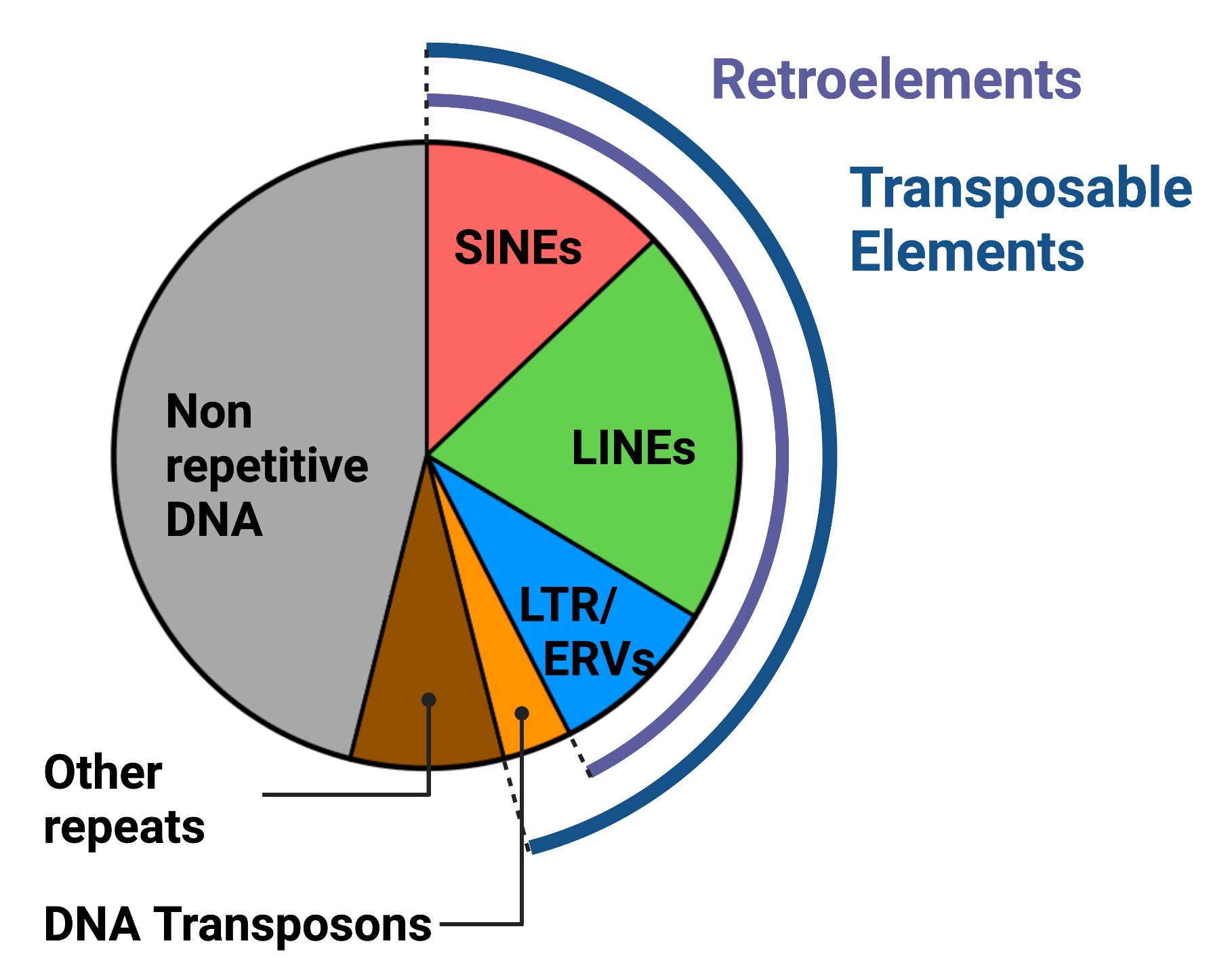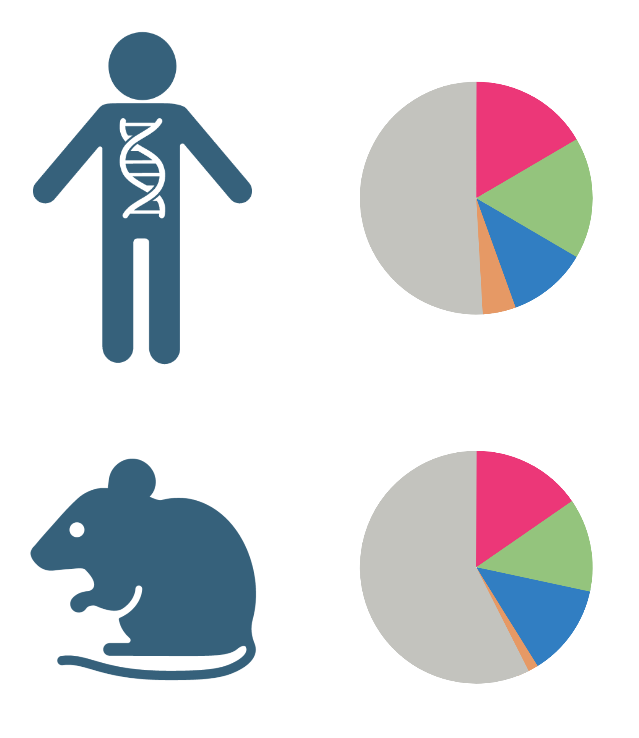
Research in the Vabret Lab
The objective of our lab is to understand the interaction between the Immune system and Repeat Elements of our genome.
We study how Repeat Elements activate the immune system in different diseases such as Cancer, Viral Infection or Aging and investigate how cells control their immunogenicity.
We build on this knowledge to propose therapeutic strategies that harness the immunogenic properties of Repeat Elements to develop new Immunotherapies.
Why Repeat Elements?
Despite constituting roughly half of the human genome, the landscape of repetitive sequence – the repeatome – remains vastly understudied. It comprises several classes of Repeats Elements (REs), defined according to their structure and ability to change position within the genome, a property unique to Transposable Elements (TEs). While most REs are silenced at steady state, they may be reactivated during certain type of cell stress, and then can interact with components of the innate immune system and other cellular pathways.
Burgeoning research in recent years has uncovered a role played by REs in diseases as various as autoimmune disorders, cancer, neurological and neurodegenerative pathologies, viral infection, and aging.
Innate sensing
Defining the immunogenic specificities of Repeat Elements
RNA and DNA from Repeat Elements share structural and biochemical patterns with viral nucleic acids. We previoulsy showed that several of these patterns, which include viral-mimicking RNA secondary structures and 5’-PPP moieties, specific nucleotide or dinucleotide composition or the ability to be reverse-transcribed, confer them the ability to bind and activate innate immune sensors during virus infection and modulate the sensitivity of tumor to immunotherapy.
Regulation of immunogenicity
Identifying gatekeeping mechanisms that control the immunogenicity of Repeat Elements.
The immunogenic potential of certain Repeat Elements represents a risk to cell homeostasis if not properly defused by dedicated gatekeeping mechanisms. This is corroborated by the involvement of RE in several autoimmune and inflammatory disorders, including age-related inflammation, where epigenetic repression of their expression is relaxed and/or gatekeeping mechanisms are altered. We previoulsy showed that during RNA virus inection host-derived Y RNA are regulated by the cellular RNA triphosphatase DUSP11 that convert immunogenic 5’-PPP RNA into immunogenically inert 5’-P RNAs.
Antigen presentation
Mapping the antigenic landscape derived from Transposable elements
While initially categorized as non-coding RNAs, Repeat Elements and, in particular, certain classes of Transposable elements are now an appreciated reservoir of antigenic targets in cancer. Yet, very little is know about the landscape of antigens derived from Transposable elements and their tumor specificity.
Evolution
Investigating how the evolution of repeat elements impacts their immunogenicity.
Insertions of Transposable Elements are not only a direct source of polymorphism of the genome evolution, but Repeat Elements classes themselves show high divergence between species. An important outstanding question in the field is whether the immunogenicity displayed by specific classes of Transposable Elements is a property that is selected through evolution.
Immunotherapy
Developing a new class of therapeutics
Given the role they play in multiple pathologies and their ability to interact with innate immune sensors and modulate cellular immune responses, Repeat Elements form a particularly attractive, yet unexploited, pool of therapeutic targets. Depending on the pathology, where priming or inhibiting immune responses is beneficial, our laboratory is exploring different therapeutics approaches to harness the immunogenicity of REs.






